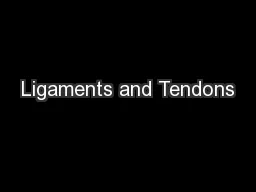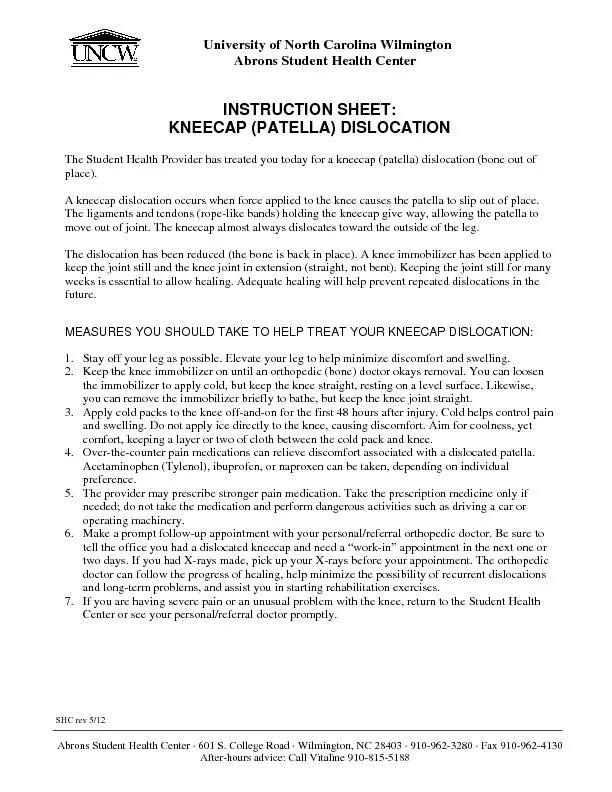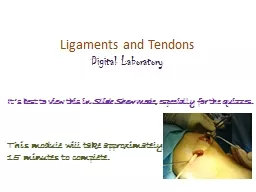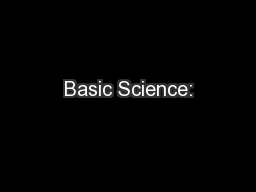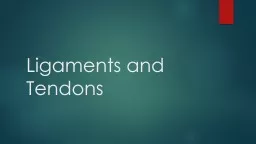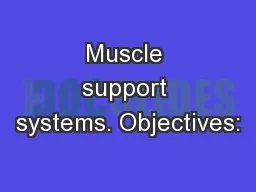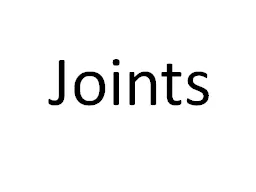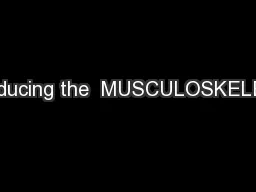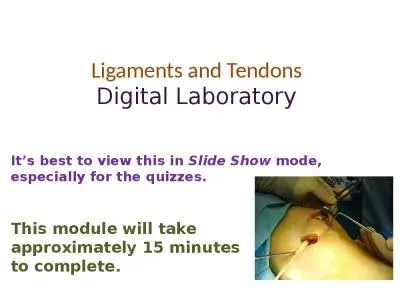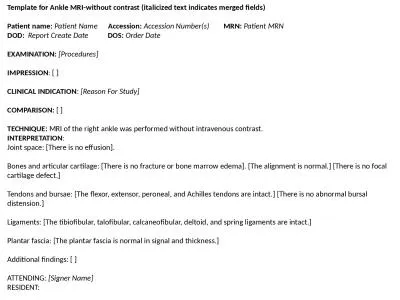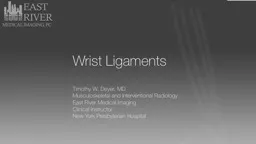PPT-Ligaments and Tendons
Author : mitsue-stanley | Published Date : 2016-04-18
Digital Laboratory Its best to view this in Slide Show mode especially for the quizzes This module will take approximately 15 minutes to complete After completing
Presentation Embed Code
Download Presentation
Download Presentation The PPT/PDF document "Ligaments and Tendons" is the property of its rightful owner. Permission is granted to download and print the materials on this website for personal, non-commercial use only, and to display it on your personal computer provided you do not modify the materials and that you retain all copyright notices contained in the materials. By downloading content from our website, you accept the terms of this agreement.
Ligaments and Tendons: Transcript
Digital Laboratory Its best to view this in Slide Show mode especially for the quizzes This module will take approximately 15 minutes to complete After completing this exercise you should be able to. Lecture Objectives. Describe the composition of the horse skeleton. Describe the four types of bones. Explain the difference between the axial and appendicular skeleton and describe the composition of each. The ligaments and tendons (rope-like bands) holding the kneecap give way, allowing the patella to move out of joint. The kneecap almost always dislocates toward the outside of the leg. The dislocation Digital Laboratory. It’s best to view this in . Slide Show . mode, especially for the quizzes.. This module will take approximately 15 minutes to complete.. After completing this exercise, you should be able to:. Tendon. Shane . Hanzlik. , MD. 2014. Overview. Anatomy . Biomechanics. Injury patterns. Mechanisms of healing. Tendinopathy. Attaches muscle to bone. Transmits force generated from muscle to bone . moves bone/joint. Ligaments vs. Tendons. Ligaments connect Bone to Bone. Tendons connect muscle to bone. Ligament . A . ligament is a fibrous connective tissue which attaches bone to bone, and usually serves to hold structures together and keep them stable. The Muscular System:. Skeletal Muscles and Tendons. Skeletal Muscles. Striated muscle. Attached to bones and moves the skeleton.. Voluntary muscle.. Thick in the middle and taper off towards the ends. . Muscular System. Assessment Techniques. General Inspection. : asymmetry, deformity, swelling or bruising. Systematic movement. : weakness?. Reflex tests. : assessing the neurological functioning of muscular system. Understand the role of ligaments and tendons.. Understand the interaction between muscles and bones.. Understand slow and fast twitch fibers. . 23/05/2017. Quick Quiz.. Where are Tendons attached?. Where are ligaments attached?. 2 ways to classify:. 1) Functional. 2) Structural. Functional Classification:. Immovable joints- . Synarthroses. Slightly moveable- . A. mphiarthroses. . Freely moveable- . Diarthroses. Structural Classification:. . system. . Teachers in Residence . Programme. Andrew Fogarty and Clive Monahan. Musculoskeletal. . System. Bones. Muscles. Muscles. Tendons. Joints and Ligaments. Cartilage. . Bones-Human Skeleton. It’s best to view this in . Slide Show . mode, especially for the quizzes.. This module will take approximately 15 minutes to complete.. After completing this exercise, you should be able to:. . Distinguish, at the light microscope level, each of the following components of connective tissue:. text indicates merged . fields). Patient . name. : . Patient . Name. . Accession. : . Accession Number(s) . MRN. : . Patient . MRN. . DOD. : . Report Create Date. . . DOS. MD. Musculoskeletal and Interventional Radiology. East River Medical . Imaging. Clinical Instructor. New York Presbyterian Hospital. A copy of the presentation can be found at:. eastriverimaging.com. What is C ollagen ? multifunctional ( 1 ). It is found throughout the body in a variety of forms and functions making up 30 percent of your body tissue and 70 % of your skin tissue . Specifically,
Download Document
Here is the link to download the presentation.
"Ligaments and Tendons"The content belongs to its owner. You may download and print it for personal use, without modification, and keep all copyright notices. By downloading, you agree to these terms.
Related Documents

